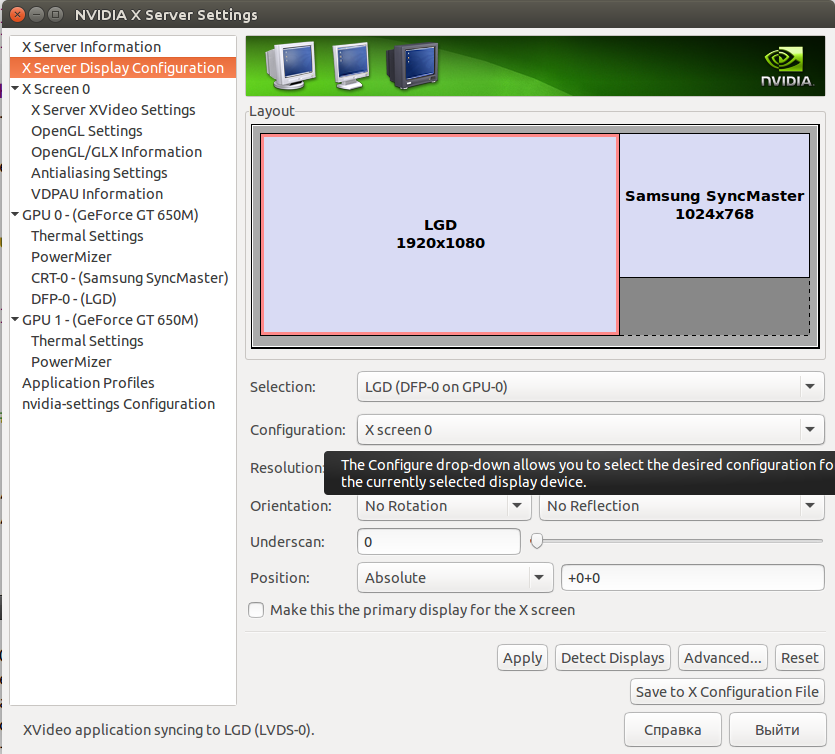Answer the question
In order to leave comments, you need to log in
How to turn off the laptop monitor systemically?
Hello! I recently switched to Linux, to put it mildly, I'm a teapot. Now I want to turn off the monitor built into the laptop, because I connected the monitor via VGA. I tried it in the settings, to no avail: I turn it off, the connected monitor goes out, ten seconds and I turn out to be an unauthorized user, and the laptop monitor is not turned off.
How do I turn off the monitor using the terminal?
Answer the question
In order to leave comments, you need to log in
I recently switched to Linux, to put it mildly, I'm a teapot.
% xrandr
Screen 0: minimum 320 x 200, current 1280 x 1024, maximum 8192 x 8192
VGA-0 connected primary 1280x1024+0+0 (normal left inverted right x axis y axis) 376mm x 301mm
1280x1024 60.02 + 75.02*
1152x864 75.00
1024x768 75.08 70.07 60.00
832x624 74.55
800x600 72.19 75.00 60.32 56.25
640x480 75.00 72.81 66.67 60.00
720x400 70.08
LVDS connected (normal left inverted right x axis y axis)
1024x600 59.99 +
800x600 59.86
848x480 59.66
720x480 59.71
640x480 59.38
HDMI-0 disconnected (normal left inverted right x axis y axis)If you have Nvidia, then  select "Disable" in the "Configuration" list.
select "Disable" in the "Configuration" list.
If you are less fortunate with the video card, then smoke the xorg.conf documentation. Generate a default config, and then look at specific sections.
Remove the desired monitor from the "Screen" section.
If your window manager doesn't work through the regular gui, then there are options
1 to install arandr, start it and turn it off from there
2 use xrandr from the console.
On my mint, the xset dpms force off command turns off the monitor until a signal is received from input devices.
https://wiki.archlinux.org/index.php/Display_Power...
You can hang it on a shortcut in the control panel (then it's better with a delay: sleep 1 && xset dpms force off) or on a keyboard shortcut.
If you have Cinnamon you can install the Turn Off Monitor plugin ( https://cinnamon-spices.linuxmint.com/applets/view/284)
Here is a simple script to disable and lock the screen:
#!/bin/bash
sleep 0.5
xset dpms force off
loginctl lock-session
Didn't find what you were looking for?
Ask your questionAsk a Question
731 491 924 answers to any question